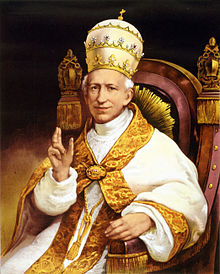Sedevacantism is a traditionalist Catholic movement which holds that since the death of Pius XII the alleged occupiers of the Holy See are not valid popes due to their espousal of one or more heresies and that, for lack of a valid pope, the See of Rome is thus vacant. Sedevacantism owes its origins to the rejection of the theological and disciplinary changes implemented following the Second Vatican Council (1962–1965).
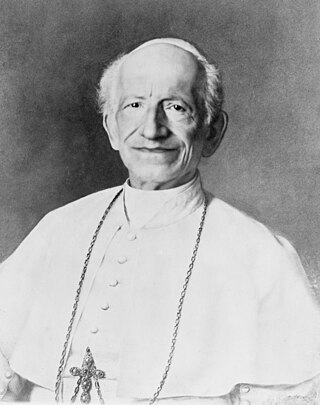
Pope Leo XIII was head of the Catholic Church from 20 February 1878 until his death in July 1903. Living until the age of 93, he was the oldest pope holding office, and had the fourth-longest reign of any pope, behind those of St. Peter, Pius IX and John Paul II.

Michael Augustine Corrigan was an American prelate of the Roman Catholic Church who served as the third archbishop of New York from 1885 to 1902.
Modernism in the Catholic Church describes attempts to reconcile Catholicism with modern culture, specifically an understanding of the Bible and Catholic tradition in light of the historical-critical method and new philosophical and political developments of the late 19th and early 20th centuries.
Unigenitus is an apostolic constitution in the form of a papal bull promulgated by Pope Clement XI in 1713. It opened the final phase of the Jansenist controversy in France. Unigenitus censured 101 propositions of Pasquier Quesnel as:
false, captious, ill-sounding, offensive to pious ears, scandalous, pernicious, rash, injurious to the Church and its practices, contumelious to Church and State, seditious, impious, blasphemous, suspected and savouring of heresy, favouring heretics, heresy, and schism, erroneous, bordering on heresy, often condemned, heretical, and reviving various heresies, especially those contained in the famous propositions of Jansenius.

John Ireland was an American religious leader who was the third Roman Catholic bishop and first Roman Catholic archbishop of Saint Paul, Minnesota (1888–1918). He became both a religious as well as civic leader in Saint Paul during the turn of the 20th century. Ireland was known for his progressive stance on education, immigration and relations between church and state, as well as his opposition to saloons and political corruption. He promoted the Americanization of Catholicism, especially in the furtherance of progressive social ideals. He was a leader of the modernizing element in the Roman Catholic Church during the Progressive Era. He created or helped to create many religious and educational institutions in Minnesota.
Americanism was, in the years around 1900, a political and religious outlook attributed to some American Catholics and denounced as heresy by the Holy See.

Isaac Thomas Hecker was an American Catholic priest and founder of the Paulist Fathers, a North American religious society of men.
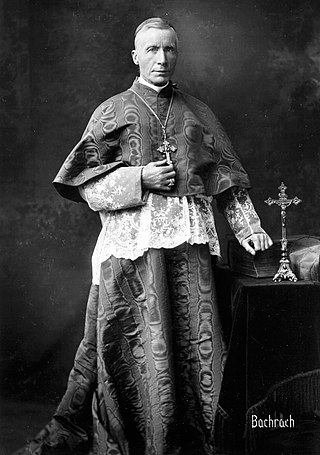
James Cardinal Gibbons was a senior-ranking American prelate of the Catholic Church who served as apostolic vicar of the Apostolic Vicariate of North Carolina from 1868 to 1872, bishop of the Diocese of Richmond in Virginia from 1872 to 1877, and as ninth archbishop of the Archdiocese of Baltimore in Maryland from 1877 until his death. He was elevated to the rank of cardinal in 1886.
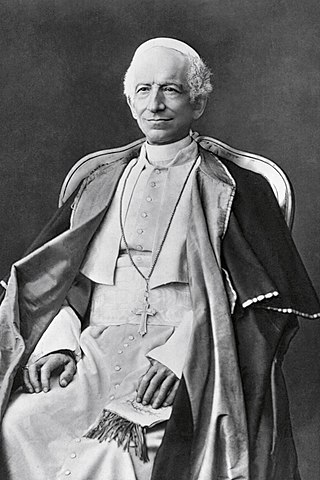
The papal conclave held from 18 to 20 February 1878 saw the election of Vincenzo Pecci, who took the name Leo XIII as pope. Held after the death of Pius IX, who had had the longest pontificate since Saint Peter, it was the first election of a pope who would not rule the Papal States. It was the first to meet in the Apostolic Palace in the Vatican because the venue used earlier in the 19th century, the Quirinal Palace, was now the palace of the king of Italy, Umberto I.
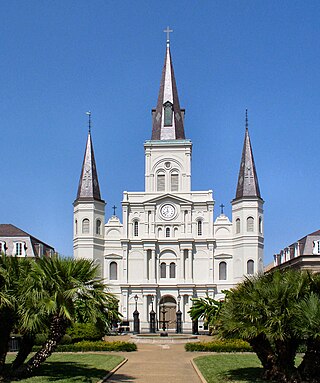
The Archdiocese of New Orleans is a Latin Church ecclesiastical division of the Catholic Church spanning Jefferson, Orleans, Plaquemines, St. Bernard, St. Charles, St. John the Baptist, St. Tammany, and Washington civil parishes of southeastern Louisiana. It is the second to the Archdiocese of Baltimore in age among the present dioceses in the United States, having been elevated to the rank of diocese on April 25, 1793, during Spanish colonial rule.
The Wanderer is a lay Roman Catholic weekly newspaper published in Saint Paul, Minnesota, and distributed to a national market. It was founded by Joseph Matt on 7 October 1867. Unlike diocesan publications or those of religious institutes, the newspaper is independent of ecclesiastical oversight. It is considered conservative and traditionalist.
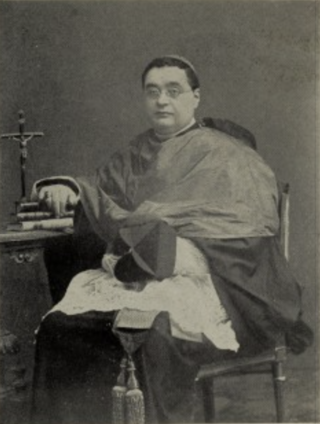
Camillo Mazzella was an Italian Jesuit theologian and cardinal.
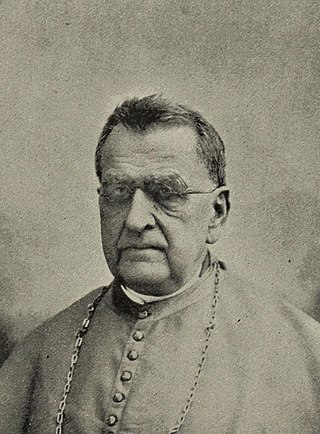
Michael Heiss was a German-born prelate of the Roman Catholic Church who served as the first bishop of the Diocese of La Crosse in Wisconsin (1868–1880) and the second archbishop of the Archdiocese of Milwaukee in Wisconsin (1881–1890).
Apostolicae curae is the title of an apostolic letter, issued in 1896 by Pope Leo XIII, declaring all Anglican ordinations to be "absolutely null and utterly void". The Anglican Communion made no official reply, but the archbishops of Canterbury and York of the Church of England published a response known by its Latin title Saepius officio in 1897.

Frederick Xavier Katzer was an Austrian-born prelate of the Catholic Church. He served as bishop of the Diocese of Green Bay in Wisconsin (1886–1891) and archbishop of the Archdiocese of Milwaukee in Wisconsin (1891–1903).

John Joseph Frederick Otto Zardetti was a Swiss prelate of the Roman Catholic Church. He first served as the first bishop of the new Diocese of Saint Cloud in Minnesota in the United States from 1889 to 1894. Zardetti then served as Archbishop of the Archdiocese of Bucharest in what is today Romania from 1894 to 1895. After resigning as archbishop, Zardetti briefly, but influentially served in the Roman Curia with the title of titular archbishop of Mocissus.
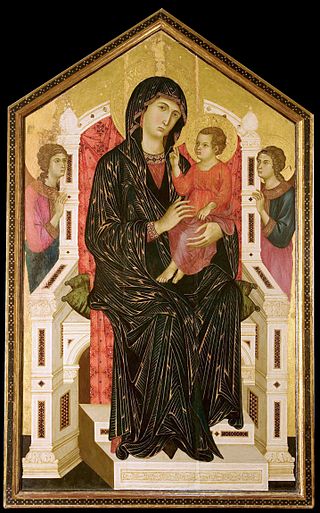
Mariological papal documents have been a major force that has shaped Roman Catholic Mariology over the centuries. Mariology is developed by theologians on the basis not only of Scripture and Tradition but also of the sensus fidei of the faithful as a whole, "from the bishops to the last of the faithful", and papal documents have recorded those developments, defining Marian dogmas, spreading doctrines and encouraging devotions within the Catholic Church.
In 1800 the Catholics were a small minority everywhere except Maryland. Immigration from Ireland and Germany gave them millions of adherents from the 1840s to the 1880s. Then came millions more from Italy, Poland and Eastern Europe, as well as French Canada. Large numbers of priests and nuns came from Ireland and France. The Irish soon dominated the clergy church, with a great majority of bishops by 1900. As the immigrants arrived new parishes and diocese were created. Rebuffed in efforts to obtain government funds for schools, the Catholics set up a parochial school system largely staffed with nuns. It reached about a third of the children. They also set up colleges. There were few Catholics in the South, apart from Louisiana. However they were well represented in the nation's cities, mill towns and mining centers. Anti-Catholic politics flared briefly in the 1850s, but the Catholic voters surged into the Democratic Party and Irish Catholic politicians played increasingly dominant roles in Democratic machines in Boston, New York, and other major cities. Devotional practices included daily rosary prayers, regular attendance at Sunday Mass, and special roles for devotion to the Blessed Virgin Mary and favorite saints.
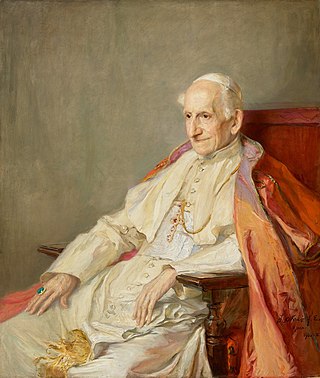
The theology of Pope Leo XIII was influenced by the ecclesial teachings of the First Vatican Council (1869-1870), which had ended only eight years before his election in 1878. Leo issued some 46 apostolic letters and encyclicals dealing with central issues in the areas of marriage and family and state and society.
